Mark Sisson's Blog, page 5
July 14, 2023
New and Noteworthy: What I Read This Week—Edition 230

The destruction of the bison ruined Plains Indian nations who relied on them.
Short sleep nullifies the benefits of exercise.
Higher soil quality, higher state quality.
Cognitive function and firearms performance.
Eating more calcium and protein reduces falls and fractures in the elderly.
New Primal Kitchen PodcastsPrimal Health Coach Radio: Wayne Altman
Primal Kitchen Podcast: Mark and Carrie Sisson on Self-Care Routines, Success, and Manifesting Your Best Life
Media, SchmediaHumans were making pendants out of giant sloth bones at least 25,000 years ago.
This article on sunscreen, sunlight, and vitamin D is shockingly dishonest from the first paragraph.
Interesting Blog PostsSocial NotesEverything ElseHigh protein diets are good for many reasons.
Things I’m Up to and Interested InInteresting: Drug decriminalization isn’t going so well in Portugal.
Future thinking: Could AI change our memories?
Can’t tell if this is serious: Microdosing alcohol.
Important: Allan Savory.
Worth a watch: Great talk from Feynman.
Question I’m AskingWhat does aging mean to you?
Recipe CornerGreek sheet pan chicken.Hummus (to go with the previous dish).Time CapsuleOne year ago (Jul 8 – Jul 14)
Is Technology Causing ADHD?—Is it?Ask a Health Coach: Eating Primal on Your Period—How’s it work?Comment of the Week
“Of course I think positively of the future. There’s no other way to live, in my opinion.
I love my life. It’s not perfect, but it’s leagues far from shit and I enjoy the hell out of my wife, family, friends, hobbies, memories, etc.
I don’t believe in any religion. I think heaven and hell are here on earth. So act accordingly, goddammit. ?
Also, live long and drop dead, am I right?“
-Sounds good.
(function($) { $("#dfECAR1").load("https://www.marksdailyapple.com/wp-ad..." ); })( jQuery ); 
The post New and Noteworthy: What I Read This Week—Edition 230 appeared first on Mark's Daily Apple.
How Does Sunscreen Work, and Should You Use It?
 One of my missions is to get more people enjoying the great outdoors without fearing the sun. We should respect the sun, sure. Sunlight is a powerful agent that, like so many enjoyable and beneficial things in life, can become harmful in excessive doses. But the sun is also a great life force, powering every living thing on the surface of this planet.
One of my missions is to get more people enjoying the great outdoors without fearing the sun. We should respect the sun, sure. Sunlight is a powerful agent that, like so many enjoyable and beneficial things in life, can become harmful in excessive doses. But the sun is also a great life force, powering every living thing on the surface of this planet.
As you may know, I’m not a huge fan of sunscreen. I just don’t think it’s all that necessary. If you’ve had enough sun for one day, and you’re worried about burning up, using physical barriers like shirts, hats, umbrellas, and shade trees to impede the sunlight is my preferred course of action.
Our ancestors used various methods to protect themselves from blistering sun rays,https://www.ncbi.nlm.nih.gov/pmc/arti... ">1 but modern sunscreens were only invented in the last century. Since then people have become obsessed, with the encouragement of doctors, to slather their skin with powerful chemicals every two hours to avoid even a whiff of color, even as deadly skin cancer rates have risen since the mid-twentieth century.https://www.ncbi.nlm.nih.gov/pmc/arti... ">2
So no, I’m not on the side of Big Sunscreen. I certainly avoid the chemical compounds that most commercial sunscreens contain. These chemicals act as carcinogens, at least in animal models, and harm the oceans’ ecosystems.
Still, in the event that the only thing standing between you and a second-degree sunburn is the application of some sunscreen, that’s an obvious choice. You should always opt for safer sunscreen ingredients, though. That’s what we’re talking about today.
How Does Sunscreen Work?Mineral vs. chemical sunscreenThe sunscreens you’ll see on your supermarket or pharmacy shelves work in one of two ways.
Chemical sunscreens contain chemicals that are absorbed into the skin. When UVA and UVB rays hit the skin, they react with these chemicals and dissipate as heat. Common chemical sunscreen active ingredients are oxybenzone, avobenzone, octocrylene, octisalate, and homosalate.
Mineral sunscreens sit on top of the skin and provide a barrier using zinc oxide or titanium dioxide to block UVA and UVB rays from penetrating the skin. That’s why these are also called physical sunscreens.
Pros and cons of chemical sunscreens (mostly cons)The only good thing I have to say about chemical sunscreens is ease of use. They go on smoothly and are usually clear on the skin. That’s not enough to weigh all the cons in my book.
Con: endocrine disrupting UV filtersMost of your typical commercial sunscreens use chemical UV filters like benzophenone and oxybenzone that in addition to blocking UV possess a hidden feature: endocrine (hormone) disruption.
Certain forms of benzophenone, for example, inhibit the action of thyroid peroxidase, an enzyme necessary for the production of thyroid hormone.https://www.ncbi.nlm.nih.gov/pubmed/1... ">3 Another study showed that applying sunscreen containing benzophenone-2 for five days lowered T4 and T3 thyroid hormones in rats.https://www.ncbi.nlm.nih.gov/pubmed/1... ">4
Other researchers applied a UV filter called octyl-methoxycinnamate to rat skin and found that amounts typically present in sunscreen were enough to disrupt hormonal function and exert other, non-endocrine health effects.https://www.ncbi.nlm.nih.gov/pubmed/1... ">5
That might not be a problem if UV filters in sunscreen weren’t designed to be absorbed into the skin, and therefore the body, but they are. The only way the chemical sunscreens work is if they are absorbed into the skin—and into systemic circulation. Two studies in 2019https://www.ncbi.nlm.nih.gov/pmc/arti... ">6 and 2020https://www.ncbi.nlm.nih.gov/pmc/arti... ">7 demonstrated that common chemical sunscreen ingredients are readily absorbed into the body. More worryingly, even after a single application, these chemicals were present at levels higher than the FDA’s limit for requiring additional safety testing.
Con: imbalanced UV protectionAnother downside of chemical sunscreens is that they’re selective screeners. They tend to block UVB while allowing UVA passage.https://www.ncbi.nlm.nih.gov/pmc/arti... ">8 https://www.ncbi.nlm.nih.gov/pmc/arti... ">9
UVB rays penetrate the epidermis, the upper layers of our skin, and trigger vitamin D production. UVA rays, on the other hand, penetrate more deeply into the basal section of the dermis, which is where most skin cancer develops. Excessive UVA exposure is also associated with wrinkling, immune suppression, oxidative stress, and related aging. Research shows that concurrent exposure to UVB actually serves to counteract skin damage and inflammation from UVA. We need both together. Blocking one while exposing our skin to the other is a recipe for danger.
Con: environmental concernsThere’s clear evidence that chemical sunscreen ingredients are damaging to coral reefs and sea life.https://pubmed.ncbi.nlm.nih.gov/29981... ">10 This is such a concern that Hawaii, the U.S. Virgin Islands, Aruba, and other countries have banned chemical sunscreens in their waters. Only mineral sunscreens are allowed. Other regions are sure to follow suit, so if you have a seaside vacation planned, look for non-chemical sunscreens with the Protect Land + Sea Certification seal.
Pros and cons of mineral sunscreens (mostly pros)Physical sunscreens contain either zinc oxide or titanium dioxide. These are the only sunscreen active ingredients recognized as safe by the FDA. The active ingredients in chemical sunscreens are permitted for use by the FDA, but as of 2019, the agency admits that there isn’t enough evidence to give them the GRASE (generally regarded as safe and effective) stamp of approval.https://www.federalregister.gov/docum... ">11 Yikes.
Mineral sunscreens are also broad spectrum: they block both UVA and UVB. Because they don’t dissipate UV rays as heat, they are better for people with skin conditions that can be exacerbated by heat. They’re generally less irritating for those with sensitive skin, too.
The biggest con to physical sunscreens is that they can be unsightly because they don’t absorb into your skin, often leaving a ghostly white cast that people don’t like. On the plus side, if you can see the sunscreen on your skin, you know it’s still working, unlike chemical sunscreens that may rub or wash off without you noticing. Manufacturers have also started to develop better formulations, including clear and tinted versions that are better suited for darker skin tones.
Physical sunscreen in nanoparticle form does rub in, but there’s conflicting evidence about the degree to which it’s absorbed and whether it matters from a health perspective. I wouldn’t want to inhale them in any case.
Zinc oxide and titanium dioxide nanoparticles are also not considered reef safe, so read labels carefully if you’re headed to the beach. Choose mineral sunscreens with regular, non-nano, active ingredients.
Sunscreen ingredients to avoidLook at both the active and inactive ingredients lists on the back of the bottle or tube. If you see any of these, just say no.
OxybenzoneAvobenzoneOctocryleneBenzophenoneHomosalateOctisalateOctinoxateCinoxateDioxybenzoneEnsulizoleMeradimatePadimate OSulisobenzonePABA (aminobenzoic acid) and trolamine salicylate have been banned by the FDA, but you might see them in sunscreens if you’re traveling internationally. Strictly avoid these.
There are two other ingredient categories to avoid:
ParabensParabens are ubiquitous preservatives used in cosmetic and skincare products, including sunscreens. They show up in our urine because humans can readily absorb parabens from topical application.https://www.ncbi.nlm.nih.gov/pubmed/1... ">12 Although the health effects haven’t been explicitly proven, human studies suggest a link between urinary paraben levels and certain health conditions, such as sensitivities to airborne and food allergies,https://www.ncbi.nlm.nih.gov/pmc/arti... ">13 elevated stress hormones in pregnant mothers and their newborn children (who, by the way, are showing up with parabens in their first urine!),https://www.ncbi.nlm.nih.gov/pubmed/2... ">14 and DNA damage to sperm.https://www.ncbi.nlm.nih.gov/pmc/arti... ">15
RetinolsVitamin A in the diet is protective against sun damage, so manufacturers figured they’d start putting it in topical sunscreens. Except a 2012 study in hairless mice found that applying retinyl palmitate to bare skin and exposing it to UV increased tumor incidence and skin damage.https://pubmed.ncbi.nlm.nih.gov/23001... ">16 Now, humans aren’t hairless mice, and the results from the 2012 paper may not apply to us. But even if retinyl palmitate isn’t carcinogenic, it’s useless. Avoid sunscreens containing retinyl palmitate, retinol, or vitamin A just to be safe.
Sunscreen Best PracticesHere’s what I recommend when it comes to enjoying the benefits of the sun while also protecting yourself against the harms of overexposure.
1. Use sunscreen alternatives first.
Given the option, I’ll always go for hats, clothing, and shade first when I feel myself baking. Lightweight wool garments are surprisingly suited to warm and cold environments alike and provide good sun protection.
2. Opt for zinc oxide or titanium dioxide sunscreens.
SPF 30 is probably as high as you need. There’s no harm in going up to SPF 50, but there’s also no benefit to going higher.
3. Apply wisely.
Don’t forget the backs of your hands, tops of your ears, and your part or areas of thinning hair if you’re not wearing a hat. Mineral sunscreens generally have good staying power, but reapply as needed.
4. Toss expired sunscreen.
The active ingredients can break down, and there’s no point in dousing yourself with stuff that isn’t even effective.
5. Don’t neglect the inside-out factors.
Sun protection isn’t just a surface-level issue. It’s always good to be proactive and to take steps to make your body more resilient against any potential damage. Consuming a Primal diet rich in antioxidants bolsters your skin’s ability to fight free radical formation.
I hear all the time from folks who go Primal and find themselves less prone to sunburns than they were before. I can’t say for sure what’s going on here, but my hunch is that it has something to do with the link between chronic inflammation and skin damage.https://www.ncbi.nlm.nih.gov/pmc/arti... ">17 A healthy Primal lifestyle probably factors in here, too. Our ability to repair UV-derived damage depends on a well-functioning circadian rhythm.https://www.ncbi.nlm.nih.gov/pmc/arti... ">18 Sleeping well and maintaining a good eating schedule both entrain your circadian rhythm appropriately.
Whatever it is, I’ve seen it often enough to believe that there’s something to this phenomenon. I spend tons of time in the sun and know for a fact that I am less likely to burn now than I was when I was younger. I’m still smart about my sun exposure. No hubris here. I know that in a battle of me versus one of the most powerful forces in the universe, I’m no match when it comes down to it.
But I also don’t fear the sun like it seems so many medical agencies and doctors want me to. I want all the vitamin D I can get. I rely on time outside on my bike or paddle board, hiking with Carrie, or just reading poolside to balance the unavoidable stresses of modern life. The sun recharges me, and I have no intention of avoiding it.
What about you? What steps do you take to make sure your fun in the sun doesn’t leave you burned?
(function($) { $("#dfX2z8Z").load("https://www.marksdailyapple.com/wp-ad..." ); })( jQuery ); 
References https://www.ncbi.nlm.nih.gov/pmc/articles/PMC8682817/ https://www.ncbi.nlm.nih.gov/pmc/articles/PMC3906570 https://www.ncbi.nlm.nih.gov/pubmed/17379648 https://www.ncbi.nlm.nih.gov/pubmed/15458793 https://www.ncbi.nlm.nih.gov/pubmed/16112788 https://www.ncbi.nlm.nih.gov/pmc/articles/PMC6549296/ https://www.ncbi.nlm.nih.gov/pmc/articles/PMC6990686/ https://www.ncbi.nlm.nih.gov/pmc/articles/PMC9298345/ https://www.ncbi.nlm.nih.gov/pmc/articles/PMC7853154/ https://pubmed.ncbi.nlm.nih.gov/29981751/ https://www.federalregister.gov/documents/2019/02/26/2019-03019/sunscreen-drug-products-for-over-the-counter-human-use https://www.ncbi.nlm.nih.gov/pubmed/18194284 https://www.ncbi.nlm.nih.gov/pmc/articles/PMC3720124/ https://www.ncbi.nlm.nih.gov/pubmed/23727995 https://www.ncbi.nlm.nih.gov/pmc/articles/PMC3040614/ https://pubmed.ncbi.nlm.nih.gov/23001333/ https://www.ncbi.nlm.nih.gov/pmc/articles/PMC8068112/ https://www.ncbi.nlm.nih.gov/pmc/articles/PMC3371101/
The post How Does Sunscreen Work, and Should You Use It? appeared first on Mark's Daily Apple.
High-Antioxidant Foods
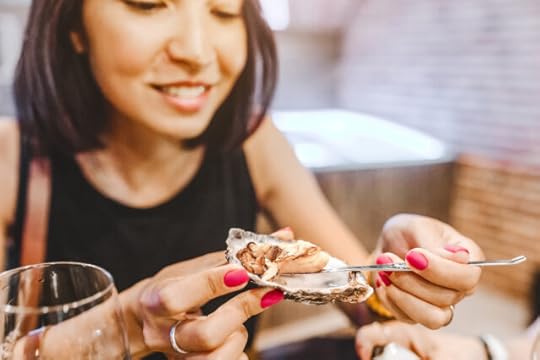 We’re all supposed to eat a “healthy diet,” but what does that really mean? Off the bat, you probably think getting enough about protein and fatty acids (notably the vital omega-3s), plus important vitamins and minerals. But there’s also the less obvious: things like prebiotics and, the topic of today’s post, antioxidants.
We’re all supposed to eat a “healthy diet,” but what does that really mean? Off the bat, you probably think getting enough about protein and fatty acids (notably the vital omega-3s), plus important vitamins and minerals. But there’s also the less obvious: things like prebiotics and, the topic of today’s post, antioxidants.
Antioxidants, as I’ve discussed previously, defend the body from free radical damage. Free radicals are unstable molecules that knock around, pillaging electrons from other molecules and causing DNA damage and oxidative stress. When free radicals run amok, the damage they cause contributes to premature aging and chronic diseases.
Antioxidants’ job is to limit free radical formation and neutralize them when their numbers become too great. Plant and animal foods deliver important antioxidant vitamins, minerals, flavonoids, carotenoids, and other substances that the body can’t produce itself. To cover your antioxidant bases, since there’s no way to avoid free radicals, here are some antioxidant-rich foods to include in your diet.
How Do You Measure Antioxidant Levels in Foods?Certain antioxidants are fairly easy to quantify. You can use any food tracking app to look up the amounts of antioxidant vitamins A, C, and E you consume in a day.
Others, like antioxidant enzymes, are considerably more complicated. Scientists have devised various methods of measuring the total antioxidant capacity of food. You have your crocin bleaching assay (CBA), trolox equivalent antioxidant capacity (TEAC), total oxyradical scavenging capacity assay (TOSC), ferric reducing antioxidant potential (FRAP), DPPH assay, and many more.https://www.ncbi.nlm.nih.gov/pmc/arti... ">19 Don’t worry, there won’t be a quiz later.
The most well-known antioxidant index is the ORAC score. ORAC, or oxygen radical absorbance capacity, was developed by scientists at the National Institute on Aging in 1992. Despite its popularity, the USDA renounced ORAC in 2012, on the grounds that ORAC doesn’t necessarily predict how much antioxidant activity happens in the body and to discourage supplement manufacturers from making strong claims about the power of their antioxidant formulations.
Nevertheless, researchers continue to use ORAC, and it remains the best way for the average person to look up which foods have relatively higher or lower antioxidant content. Don’t get too hung up the numbers, though. The question of whether these foods actually supercharge your body’s ability to fight free radicals is still up for debate. A lot of factors probably go into it, including how much of these compounds you absorb and the freshness of the food you consume.
As I see it, the best reason to consider antioxidant values is that you’ll probably end up revisiting some otherwise nutritious foods you might not be eating already. The foods that tend to score highly on antioxidant metrics are also ones that are widely considered healthy by other standards—colorful vegetables and fruits, organ meat, seafood.
Super Food List: High-Antioxidant FoodsPlant foods high in antioxidantsPlant foods tend to be higher in antioxidants than animal products, though the latter are still important for checking certain antioxidant boxes. “Eating the rainbow” will net you a good spectrum of vitamins, minerals, and other antioxidants. You can also intentionally add high-antioxidant foods in the mix.
Here are 12 plant-based foods and beverages that can boost your antioxidant intake (based on a combination of ORAC and FRAP scores):
BerriesCoffeeChocolate (the darker the better)Chia seedsArtichokesPlums and prunesPistachiosPomegranateFigsKalamata olivesKaleGreen teaIf you’re lucky enough to have dog rose berries or rowanberry in your area, definitely include those as well.
Animal foods high in antioxidantsOn an absolute basis, the antioxidant capacity of these foods is lower than the plant foods above. However, these animal foods are among the best sources of the trace minerals copper, selenium, iron, manganese, and zinc, plus other antioxidants like lutein that are crucial pieces of the body’s antioxidant defense system.
LiverOystersSalmonCrabLambBeefEggsMusselsTunaSardinesWhat say you? Do you think about antioxidants when putting together your meal plan, or is that not really a consideration for you? What are your favorite high-antioxidant foods?
(function($) { $("#dfOxRmT").load("https://www.marksdailyapple.com/wp-ad..." ); })( jQuery ); 
References https://www.ncbi.nlm.nih.gov/pmc/articles/PMC8682817/ https://www.ncbi.nlm.nih.gov/pmc/articles/PMC3906570 https://www.ncbi.nlm.nih.gov/pubmed/17379648 https://www.ncbi.nlm.nih.gov/pubmed/15458793 https://www.ncbi.nlm.nih.gov/pubmed/16112788 https://www.ncbi.nlm.nih.gov/pmc/articles/PMC6549296/ https://www.ncbi.nlm.nih.gov/pmc/articles/PMC6990686/ https://www.ncbi.nlm.nih.gov/pmc/articles/PMC9298345/ https://www.ncbi.nlm.nih.gov/pmc/articles/PMC7853154/ https://pubmed.ncbi.nlm.nih.gov/29981751/ https://www.federalregister.gov/documents/2019/02/26/2019-03019/sunscreen-drug-products-for-over-the-counter-human-use https://www.ncbi.nlm.nih.gov/pubmed/18194284 https://www.ncbi.nlm.nih.gov/pmc/articles/PMC3720124/ https://www.ncbi.nlm.nih.gov/pubmed/23727995 https://www.ncbi.nlm.nih.gov/pmc/articles/PMC3040614/ https://pubmed.ncbi.nlm.nih.gov/23001333/ https://www.ncbi.nlm.nih.gov/pmc/articles/PMC8068112/ https://www.ncbi.nlm.nih.gov/pmc/articles/PMC3371101/ https://www.ncbi.nlm.nih.gov/pmc/articles/PMC8347950/
The post High-Antioxidant Foods appeared first on Mark's Daily Apple.
July 13, 2023
Summer Fitness Advice: Mark’s 6 Basic Principles
 No doubt, summer arrives with its own rhythm, its own demands, and its own kind of freedom. Summer is an invitation to revitalize, rejuvenate, and redefine your fitness routine. As the mercury soars, the conventional gym walls might feel more like a prison cell than ever before. So, how about we shake things up a bit? Let’s break away from the conventional and immerse ourselves in a summer fitness experience like no other. Brace yourself for an exhilarating journey to the best shape of your life.
No doubt, summer arrives with its own rhythm, its own demands, and its own kind of freedom. Summer is an invitation to revitalize, rejuvenate, and redefine your fitness routine. As the mercury soars, the conventional gym walls might feel more like a prison cell than ever before. So, how about we shake things up a bit? Let’s break away from the conventional and immerse ourselves in a summer fitness experience like no other. Brace yourself for an exhilarating journey to the best shape of your life.
Here are my 6 basic principles for proper summer fitness.
Train OutsideYou can certainly train in the gym during summer. I do a lot of my training in the gym, indoors, throughout all seasons. But gym training isn’t unique to summer. Plus, it’s the default option for most people. I’m trying to get you to try something you haven’t tried before, to train in a way you can’t always train.
Sure, if it’s 100 degrees out, you might want to do the gym. You might want to get some shade. But summer affords you the opportunity to train outside in most locales.
Train barefoot in your background or a park. If you have gym equipment, simply take it outside and do what you normally do in the garage, only on the grass or dirt.
Train in the forest. Climb trees, lift logs, throw boulders.
Train at the beach or at the lake or river. Bring a kettlebell out there and get to work.
Focus on FunThe key to great summer fitness? Making it not just about the sweat and effort, but about the sheer joy of movement, the exhilaration of performance. Seeking healthy pleasure is a cornerstone of being human and thriving as a human. Pleasure is how our brain reward systems get us to do things that are good for us. Exercise is no different. If you make training fun, you actually look forward to it. You enjoy it in the moment, not just when it’s over.
And just because it’s fun doesn’t mean you’re not going to be working hard or getting a great training effect from it. It means the workout is intrinsically valuable in the moment, and therefore more sustainable.
The picture of this begins in your backyard, under the bright summer sun. In your hands, a kettlebell, that deceivingly simple yet incredibly effective piece of equipment. You swing it, lift it, press it, transforming each movement into an opportunity to build muscle, endurance, and strength. Each swing is met with a cool breeze, each lift underlined by the sun’s rays bestowing upon you a golden glow and a healthy dose of Vitamin D.
Transition your training ground from your yard to the vast, blue expanse of a lake or an ocean. Envision yourself gracefully cruising on a stand-up paddleboard, or perhaps navigating the waves in a kayak. It’s not just a workout; it’s an intimate connection with water, an element that has been entwined with our existence since evolutionary times. Comfort in water is a fitness staple, and summer is the ideal time to master it.
On dry land, there’s an entirely different adventure waiting for you. Picture yourself biking on winding trails or rollerblading down the coastline. Consider these not just as fitness tools, but as vessels of exploration. The goal isn’t merely to burn calories but to soak in the surroundings, to integrate with the elements, to experience the freedom that summer brings.
These tools – the humble kettlebell, your watercraft, and your chosen mode of land exploration – they are your partners in fitness, enabling you to tap into the unexplored power of outdoor training. What makes them special is that they aren’t just exercising equipment; they are a part of your summer fitness story, enhancing the quality of your workout and your overall experience.
Go on AdventuresInstead of just using the rower at the gym, go kayaking down the river, through some sea caves, or across the lake (for time, if you wish to increase the intensity). Or, as I do, paddle down Miami canals, often meeting dolphins and manatees along the way.
Instead of only walking on the treadmill, do a backpacking trek for a day or two. Carry your belongings up and down mountains, over boulders, through meadows and across rivers. You’ll log far more steps than you ever would on the treadmill while getting an incredible sensory experience out of it.
The gym is great. I use it myself all the time, no matter the season. But the point is to take your conventional gym training and use it to conquer the world and go on adventures.
Be EfficientI’m not going to tell you what specific exercises to do. Deadlifts, squats, pull-ups, push-ups, presses, rows, swings, muscle ups, dips, lunges, step ups, hip thrusts… they’re all fantastic options. You know what you like to do. I am going to tell you to try being a bit more intuitive and “touchy feely” when you train. That’s what summer is: a season for intuition and feeling and spontaneity. Foster that summer spirit with your rep schemes.
Here’s what I mean.
Say you’re doing push-ups, kettlebell swings, pull-ups, and squats. Or dips, trap bar deadlifts, rows, and lunges. A push, a pull, a row, and a knee flexion.
Instead of hitting a set amount of reps, do the first exercise (push-ups) until you go just shy of failure. 2-3 reps left in the tank.
Move on to the next one (kettlebell swings) and do the same. Feel that deep burn but keep a few reps in the tank. When you’re ready, return to the first exercise and do the same. Then do the same for the next one.
When you’ve hit 3-4 sets of these, move on to the next two exercises and repeat the process.
You’re learning how to feel when you’ve approached your limit. You’re getting the training effect for your muscles but you’re also training your intuition. That’s summer.
Embrace the ElementsSummer, for all its joys, brings with it an intense heat. But instead of letting it bog you down, let it fuel you. Embrace the warmth, revel in the sweat. Get filthy, dirty, dusty, muddy. Summer is your chance to build heat tolerance and improve your overall fitness level.
It’s also the time to use water to your advantage. Whether it’s plunging through the waves at the beach, diving into a crystal clear alpine lake, swimming with (or against) the current in a river, or even doing laps and underwater pool workouts, the water is an entirely new playground for your fitness exploits.
Solar TrainingWhen the sun climbs the sky, don’t hide indoors. Go outside and train in the oldest, biggest gym in the world. Soak up as much sunlight as you can, safely—don’t get burned, of course. It isn’t just a pathway to a glowing tan, nor is it only a source of vitamin D, which is a crucial prohormone involved in muscle protein synthesis, bone density accrual, and hormonal health. It also increases nitric oxide production, which can improve the transmission of oxygen and important nutrients to your muscles and other tissues as well as enhance the “pump” you get when you lift weights.Furthermore, training in hot weather can add an additional stressor—the heat—that can enhance the training effect. However it is a stressor and you may need more recovery from an outdoor sun drenched workout, but you can also derive greater benefits.
Just make sure that you stay hydrated. Add high quality salt to your water or make an electrolyte mix. I like to add a packet of LMNT to water plus collagen and creatine, then sip that before and during my workout. Hydration will improve not just your workouts but also your skin’s resistance to UV light.
In essence, summer fitness is about embracing the inherent power of the season—the heat, sunlight, sand, water, and the calming energy of nature.
Summer fitness is an exploration, an adventure. The sun-soaked season invites you to push beyond the typical, to break free from monotony and create a summer fitness routine that reflects the unique opportunities of the season. The world is your gym. Now go out there, embrace the heat, the sun, the water, and make your summer fitness journey an unforgettable one.
How do you approach fitness in summer? What are your basic summer fitness principles?
(function($) { $("#dfEbaD6").load("https://www.marksdailyapple.com/wp-ad..." ); })( jQuery ); 
The post Summer Fitness Advice: Mark’s 6 Basic Principles appeared first on Mark's Daily Apple.
July 11, 2023
Why I’m Wary of Doctors
 I pretty much don’t like doctors. Some of my best friends are doctors, but they know how I feel. I have a real issue with the way modern medicine operates.
I pretty much don’t like doctors. Some of my best friends are doctors, but they know how I feel. I have a real issue with the way modern medicine operates.
A few people you know have a nice, heart-warming medical story to tell you. On the other hand, everyone you know has a bad medical story to tell. Here is one of my many. I’m almost embarrassed to tell it because I didn’t follow my gut and do what I felt was best for myself and ended up paying for it as a result.
I see a general practitioner once a year to do routine blood work and just check in, but mostly just to shoot the shit, since he was my triathlon training partner for years. In 2017, this GP started to express worry about my climbing PSA (prostate stimulating antigen) numbers. When I say climbing, I mean they had gone from 3.5/4 to 5 over the prior two years. Standard of care would suggest that once a man’s PSA gets above 4, his physician suggests visiting a specialist to investigate the possibility of prostate cancer. Mind you, I had had common benign prostatic hyperplasia (BPH) for the prior 15 years, was asymptomatic, and totally unconcerned.
I had no issues with excessive urination (at night or otherwise). Sexual function was great. No blood in the urine or pain when I peed. Nothing other than a slightly elevated number.
Also, I have written extensively about how bad the PSA test was in predicting cancer in healthy men. For example, 70% of men who have a PSA score of between 4 and 10 do not have prostate cancer. So I knew better. Nevertheless, I heeded the advice of my GP and visited a highly recommended urologist as my PSA was now close to 6. The specialist recommended a prostate biopsy. Knowing what I know about prostate biopsies, I declined, stating that I had zero symptoms and that I was aware that the PSA test was a poor marker and basically walked out of the office kinda pissed at how quickly this invasive procedure was recommended.
If you don’t know, in a prostate biopsy the doctor basically goes in through your anus and pokes what amounts to a hollow knitting needle through your rectum 14 times to take core samples of the prostate. There is a clean out process in advance, similar to that used in preparing for a colonoscopy. Like most medical procedures it is somewhat barbaric when you think about it. Suffice it to say the prostate biopsy isn’t just “something you do,” but that’s how it’s treated.
My GP suggested I see another specialist, so I did, this time recommended by my good friend who was director of surgery at a major Los Angeles hospital. The second one said, “I think we should do a prostate biopsy.” I asked if there was anything we could do that was noninvasive, and he suggested an MRI, so I said “Okay, let’s try that!” I did the MRI, and the result came back “4 out of 5 suspicious for something.” Extremely precise language, right? By this time, I had contacted yet another urologist who read the same radiology report and said “We should probably do a biopsy.” WTF.
At this point, despite my intuition and inclination to avoid what was probably an unnecessary prostate biopsy, but also not wanting to be like Steve Jobs waiting to the last minute and then trying to chase pancreatic cancer away with carrot juice, I acceded. We scheduled the biopsy.
The morning of my biopsy, my new, third, urologist said, “By the way, I read the radiology report and I would not have given it a 4 out of 5 suspicious for something, I would have given it a 3 out of 5.” I said, “What does that mean?” He said, “It means we wouldn’t be doing a biopsy today; we would be engaging in watchful waiting. But, you’re here, you’re all cleaned out, so let’s just do the biopsy so we will know.”
He did the biopsy, and as I was leaving I asked him if there was anything else we needed to do. He said, “No, just take the antibiotics my office gave you.” I said I’d called his office, and they said they “don’t do that anymore.” He shrugged his shoulders, and said, “OK, here is a prescription to pick up on your way home.”
I take the antibiotics and two days later, at the end of a long day of hosting an event at our house in Malibu, I started to feel lightheaded. I thought perhaps it was a result of not having eaten all day and so I took a ketone supplement which usually helps in these situations, started to feel better, and then went to bed. I woke up in the middle of the night with a fever and night sweats. I tried ignoring them to get back to sleep but couldn’t. Something was seriously wrong.
Finally at 4:00 o’clock in the morning I drove myself to the emergency room at St. John’s Hospital in Santa Monica. Within minutes, I was informed that I was in full blown sepsis and it was a good thing I had come in when I had. “If it had been another couple hours you might not be here.”
Sepsis is the unofficial third leading cause of death in the United States after cancer and heart disease. It’s not a trifling thing, nor is it uncommon. Clearly, I had sustained an infection from the prostate biopsy (which, when you consider the process of taking a prostate biopsy, isn’t all that surprising). I spent three days in the hospital on a nonspecific antibiotic IV while they tried to identify the exact regimen I needed for the next week.
And then, to top it off, I get a call a few days later from the doctor’s office. Results came back negative, just as I knew they’d be. It was all for nothing, I didn’t have prostate cancer, and now I have a compromised (scarred) prostate. The medical system took a healthy asymptomatic guy with a common male condition known as BPH, nearly killed him and left him with a less-than-healthy prostate. Happens all the time.
The worst part is that these kinds of near misses rarely make the headlines or the statistics. We only hear about the fatal mistakes. We hear about when people die from medical mistakes, which is quite common. We don’t hear about the times where someone almost died or “only” ended up with a debilitating condition for their troubles.
Every day, countless individuals put their faith in doctors and the medical industry as the all-knowing, omnipotent force that can fix their problems. But here’s the bold, unvarnished truth: doctors and the medical industry aren’t always the answer for everything. Now, don’t get me wrong—doctors are fantastic when it comes to certain things. If you’ve been in a car accident and you’re bleeding out, you sure as hell want to be rushed to the ER, where a team of medical professionals will work their magic. If you have a bone sticking out of your leg, you’re not going to treat it with magnesium oil and a carnivore diet. And if you have full-blown sepsis going down you want a doctor to stick you on IV antibiotics.
This isn’t a post giving medical advice. It’s just telling a story, a story that’s all too common. I blame myself for forgetting to listen to my own intuition—intuition, by the way, that has been informed by decades of research and experimentation.
Have you ever had a great medical experience? How about a bad one, like mine? Let me know in the comment section.
(function($) { $("#dfkwv9B").load("https://www.marksdailyapple.com/wp-ad..." ); })( jQuery ); 
The post Why I’m Wary of Doctors appeared first on Mark's Daily Apple.
July 7, 2023
Keto Side Dishes
 The words “keto diet” may conjure up visions of bacon, butter, and heavy cream, but that’s just the tip of the iceberg when it comes to the delectable food options available to keto dieters.
The words “keto diet” may conjure up visions of bacon, butter, and heavy cream, but that’s just the tip of the iceberg when it comes to the delectable food options available to keto dieters.
Most people build their meal plans around main dishes, which makes sense. Main dishes usually provide the bulk of the protein in a given meal, and we all know how critical protein is for maintaining strength and staying healthy now and well into old age. But sides are how you add color, pizzazz, texture, and even more flavor. Steak—delicious. Steak served with a big-ass side salad and crispy roasted broccoli—out of this world.
Without further ado, here are 20 of our favorite side dishes to complete your fabulous, low-carb keto meals.
20 Keto Side Dishes You’ll LoveWarm Vegetable Side Dishes1. Balsamic Roasted Brussels SproutsBrussels sprouts have experienced a major popularity boost since everyone discovered that they’re actually quite delicious roasted and served with bacon. This recipe adds tangy and sweet balsamic vinaigrette to take the flavor to another level.

Customize this easy, flavorful recipe with whatever vegetables you have on hand. It’s great for summer when your garden is producing bounties.

Plain cauliflower rice might not be very exciting, but this flavorful mushroom and bacon dish is a total crowd-pleaser.

This recipe will tempt even those folks who aren’t the biggest fans of broccoli. The trick is to roast it long enough to develop some lightly browned crispy bits around the edges.
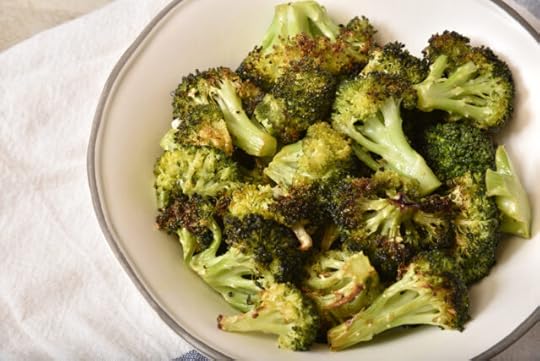
Creamed spinach might seem old-fashioned and, let’s face it, not that appealing, but give this one a try. You’ll be pleasantly surprised. Bonus: it’s dairy-free!
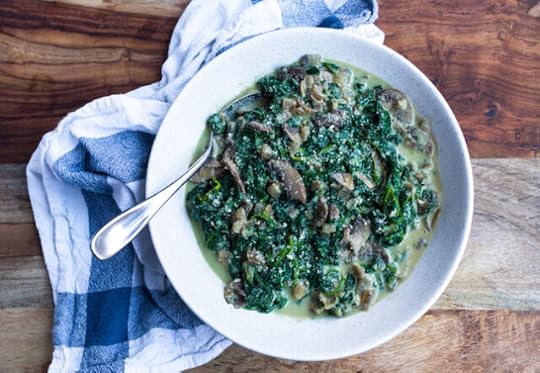
Mashed potatoes contain too many carbs to enjoy on a keto diet (unless you’re willing to stop at a spoonful or two). Luckily, there are lower-carb vegetables that are just as delicious mashed.
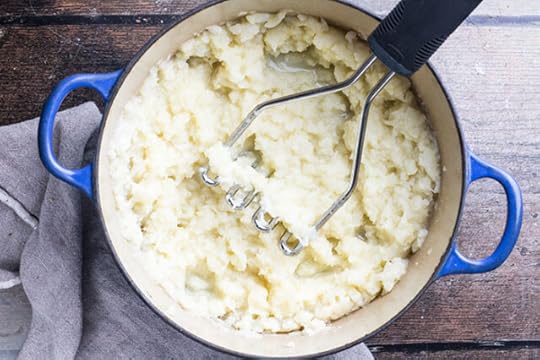
Perhaps you’ve had fried green beans off the menu at your favorite pub, but those were probably battered and fried. These are equally delicious and much more keto-friendly.
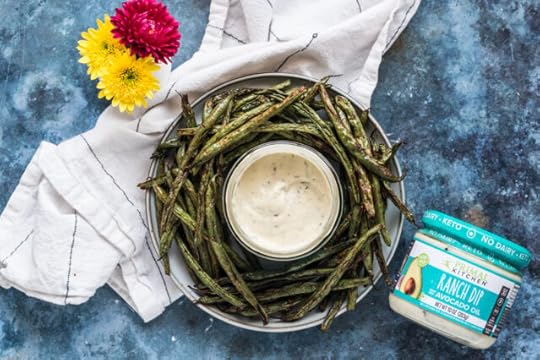
These make a yummy topping for a burrito bowl or big-ass steak salad, but you can also enjoy them with some simple grilled chicken or scrambled eggs.
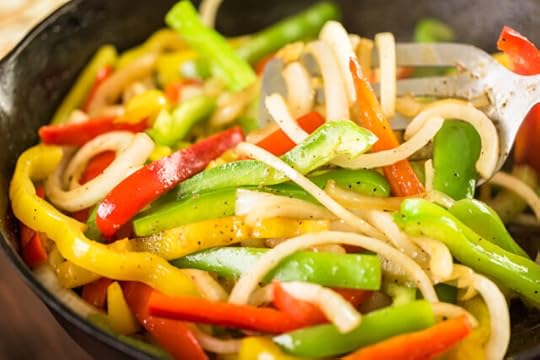
If you’ve only ever had cauliflower mashed or roasted, you must try these cauliflower steaks. Chimichurri is the real star of this show, though.
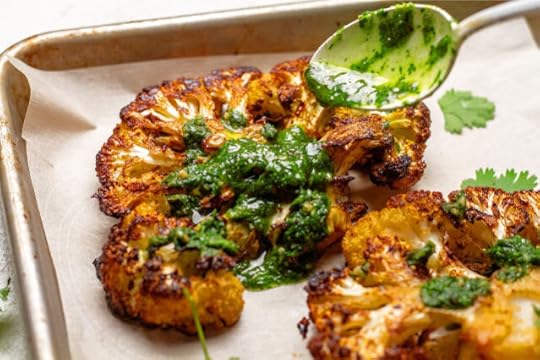
A keto version of the classic pasta dish of cheese and pepper made with zucchini noodles.
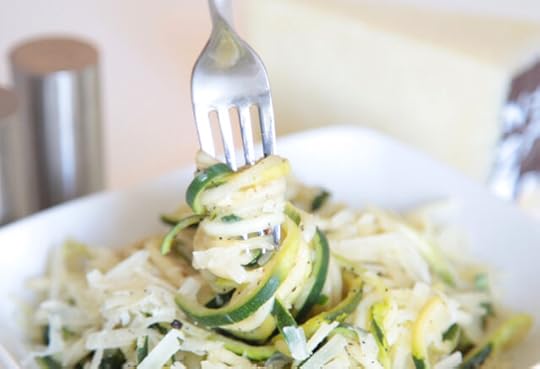
Ratatouille isn’t just a friendly talking rat, it’s a very beautiful layered baked vegetable side dish. It takes a bit of prep work to chop the veggies and assemble the casserole, but the final product is well worth it.
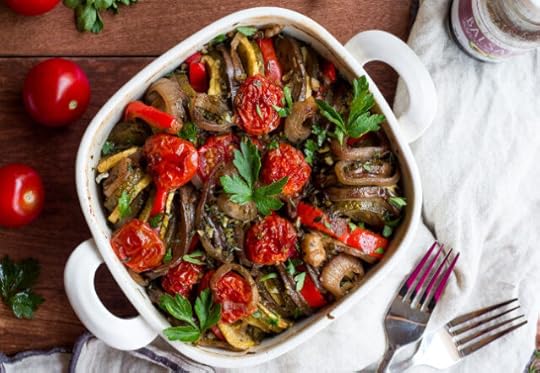
Salads and Vegetable Side Dishes Served Cold12. Summer Broccoli Salad
The best parts of this salad are the texture and the dressing. Chopping all the ingredients finely and tossing them with homemade tahini dressing makes for a unique side that pairs nicely with any grilled meat.
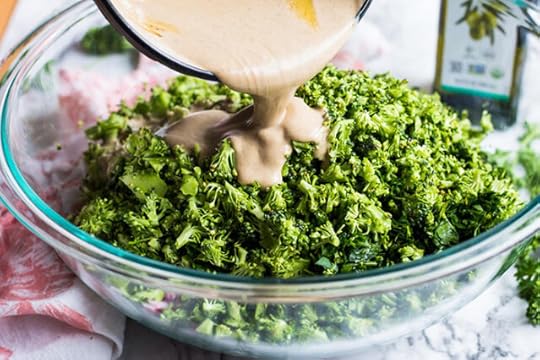
A new way to combine Brussels sprouts and bacon—into a raw salad with gorgonzola cheese and pecans that’s out of this world.

Cole slaw, made with a creamy avocado oil mayo-based dressing, is the perfect combination of nutritious vegetables and healthy fats for a keto diet.

A citrusy take on a classic slaw. Serve this with crispy pork carnitas or lettuce-wrapped fish tacos.
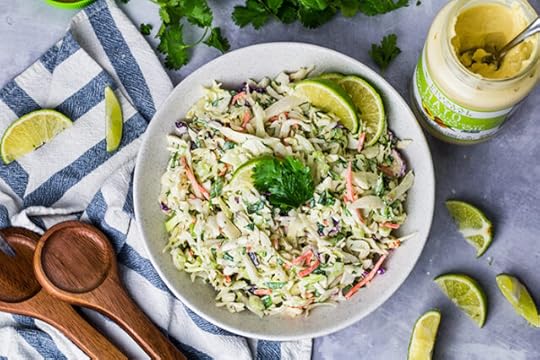
A crisp, cold wedge salad plus a perfectly grilled steak equals a meal you could eat every night and be totally happy.
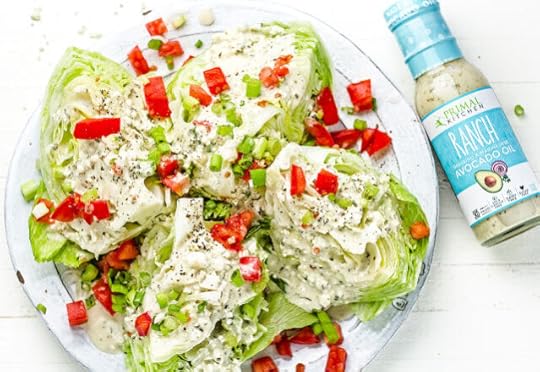
Fermented foods deliver probiotics that are fantastic for gut health. If you’ve only ever eaten store-bought sauerkraut, you’ll be surprised how simple it is to make your own sauerkraut at home. Eat it with sausages or on top of eggs. (Yes, really, sauerkraut is delicious on eggs.)
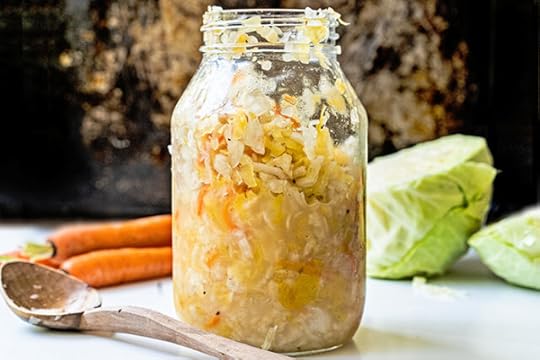
Giardiniera is dish of pickled vegetables with Italian spices. This one contains cauliflower, carrots, green beans and other vegetables. Serve it with any meat or seafood. It’s also a nice addition to a charcuterie board.
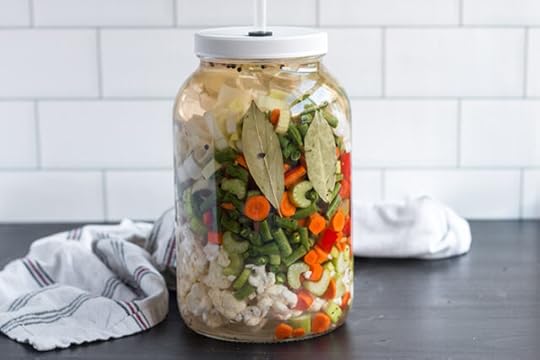
Thought you couldn’t have biscuits on keto? Wrong! These are only 5 grams of carbs each.

Another use for bacon! These savory cheesy muffins are awesome at breakfast, lunch, or dinner.
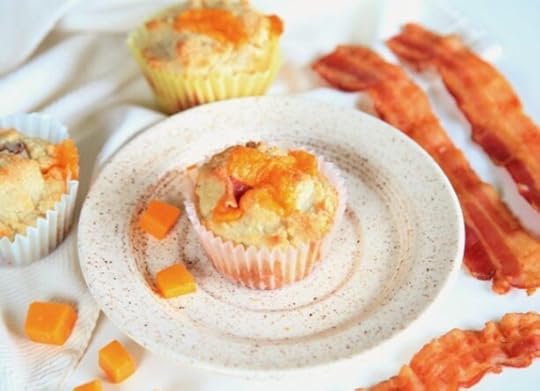
(function($) { $("#dfC5Mot").load("https://www.marksdailyapple.com/wp-ad..." ); })( jQuery ); 
The post Keto Side Dishes appeared first on Mark's Daily Apple.
New and Noteworthy: What I Read This Week—Edition 229

Income inequality in the Aztec Empire.
Thinking positive about the future reduces stress and anxiety if the thinking is relative to your current task.
Risk taking in humans and chimps is quite similar.
People are spending more money than ever, but the money is spread across a broader swathe of brands. More niche products.
Cannabis legalization doesn’t seem to have reduced opioid usage, unfortunately.
New Primal Kitchen PodcastsPrimal Health Coach Radio: Christina Frei
Primal Kitchen Podcast: Obesity Expert Dr. Spencer Nadolsky Weighs in on Ozempic
Media, SchmediaAntihistamines may reduce the effects of exercise.
Interesting Blog PostsIt’s been over ten years and they still can’t emulate a worm’s brain.
How long does it take to lose muscle on a break?
Social NotesEverything ElseWomen gain muscle quicker in the lower body than upper body.
Things I’m Up to and Interested InNot surprised: Female athletes suffer more negative effects from overtraining.
Could all be avoided: Diets high in linoleic acid increase colitis risk in mice.
That’s a shame: Plant-based protein is often rich in acrylamide.
Interesting: Personality profiles of the rich.
Worth a try: Slow eccentrics for growth hormone boosts.
Question I’m AskingDo you think positive about the future?
Recipe CornerNegima yakitori.Picanha.Time CapsuleOne year ago (Jul 1 – Jul 7)
Boron Health Benefits—Why you might want to take it.What is Seed Cycling?—Well, what is it?Comment of the Week
““How do you eat vegetables?”
Ideally, I feed them to young cattle, then enjoy the veal.“
-Efficient.
(function($) { $("#dfR3h7t").load("https://www.marksdailyapple.com/wp-ad..." ); })( jQuery ); 
The post New and Noteworthy: What I Read This Week—Edition 229 appeared first on Mark's Daily Apple.
July 3, 2023
Keto Dessert Recipes
 Ideally, your keto diet comprises mostly animal proteins, low-carb vegetables, and healthy fats—but sometimes you have a sweet tooth that needs satisfying. Or maybe you’re going to a birthday party, graduation picnic, or other celebration, and you want to bring a treat that won’t derail your low-carb way of eating. That’s where these keto desserts come in.
Ideally, your keto diet comprises mostly animal proteins, low-carb vegetables, and healthy fats—but sometimes you have a sweet tooth that needs satisfying. Or maybe you’re going to a birthday party, graduation picnic, or other celebration, and you want to bring a treat that won’t derail your low-carb way of eating. That’s where these keto desserts come in.
Typical desserts made with flour and sugar are off the menu for keto dieters due to their usually sky-high carbohydrate content. These 15 keto dessert recipes are made with keto-friendly ingredients—nut flours, coconut products, and low-carb, keto-approved sweeteners like monk fruit and stevia—that keep them low-carb and also Primal-approved. (Allulose and sugar alcohols are other acceptable sweeteners that you can sub into these recipes.)
Enjoy!
15 Keto Dessert RecipesChocolate-y Keto Treats1. Keto Chocolate Chip Cookies (Gluten Free)Our take on the classic, so good they’ll have you asking, “Chips a-who?”

The zucchini adds moisture and structure to these brownies. Looking for a way to get more veggies into your kids? Look no further.
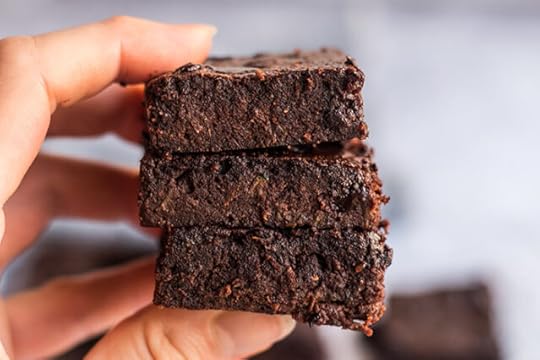
Indulge in the perfect combo of chocolate and peanut butter.

This pie is best made with fresh summer strawberries. It tastes like sunshine in your mouth.
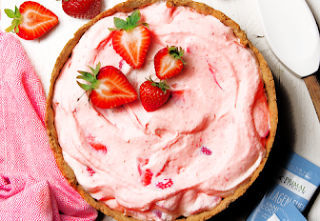
Sometimes keto-friendly baked goods are dense and heavy, but this angel food cake is the light, airy treat you expect—without all the sugar and grains.
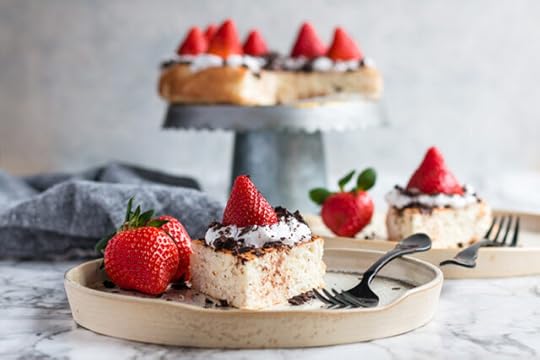
Need a dessert that everyone will go nuts for whether or not they’re keto? These no-bake cheesecake bites are it!
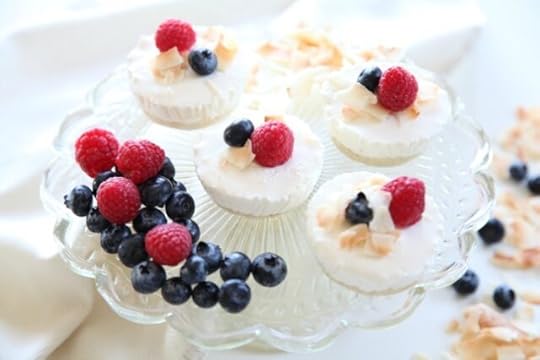
Perfect for the holidays or any time of the year.

These require the purchase of a silicon donut pan, but once you own it, you can try all sorts of variations on this recipe: chocolate, glazed, blueberry, cinnamon—yum!
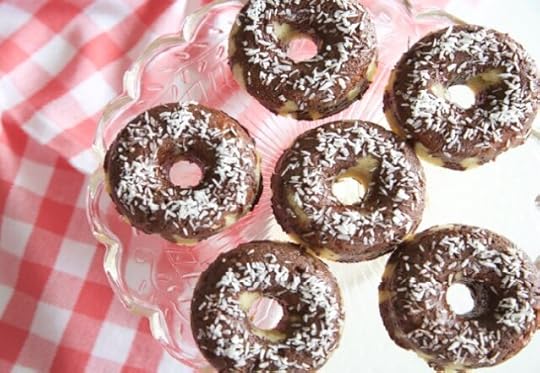
This creamy treat starts with a low-carb custard base that becomes the best keto ice cream you’ve ever had.
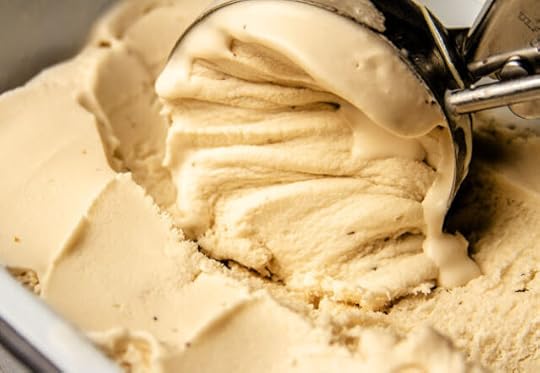
Now your morning coffee is a cool anytime refreshment.
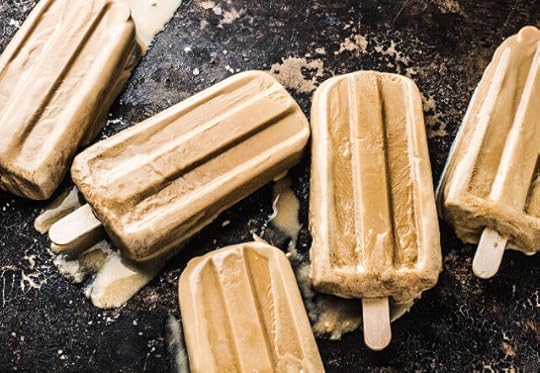
The only thing more fun than ice cream? Ice cream you eat with your fingers, of course.
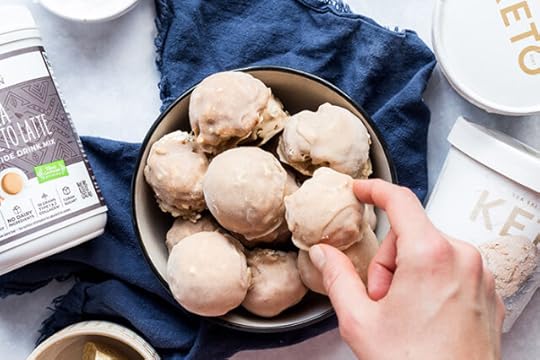
When you’re feeling nostalgic for the endless summer nights of childhood, reach for one of these fudge pops.
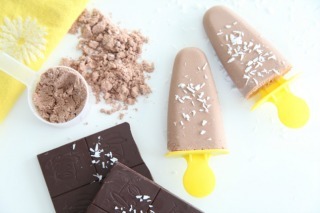
Top this low-carb ice cream with a shot of espresso for a keto-friendly affogato that’s pure bliss.

Keto folks love bacon, and we love dark chocolate, so why not put them together? Try it once, you’ll be hooked.

If you like ending a meal with a nice cup of coffee, try switching it up for this whipped coffee instead. It’s lightly sweet and delectably foamy—happiness in a mug.


The post Keto Dessert Recipes appeared first on Mark's Daily Apple.
July 1, 2023
New and Noteworthy: What I Read This Week—Edition 228

More access to grandparents, more births.
The most active athletes had more coronary plaque.
Another GLP-1 agonist (plus a couple other hormones) enters the chat and boasts even bigger weight loss effects.
New Primal Kitchen PodcastsPrimal Health Coach Radio: Benjamin Ritter
Primal Kitchen Podcast: Obesity Expert Dr. Spencer Nadolsky Weighs in on Ozempic
Media, SchmediaWashington Post discusses some reasons why processed food is bad for us, but there’s glaring omission (that rhymes with “reed boils”).
“I’d rather eat my shoe” than lab-grown meat.
Interesting Blog PostsOne doctor’s take on Ozempic.
Social NotesHow I use vegetables these days.
Everything ElseHow noise pollution affects killer whales.
Things I’m Up to and Interested InNot surprised: Athlete used high-carb for half-Ironman but found better results using high-fat for the full Ironman.
Could all be avoided: Many women and girls are iron-deficient.
Interesting podcast: Jason Fung on intermittent fasting, evolution, and cancer.
I would certainly hope so: Human ancestors survived the asteroid that killed the dinosaurs.
The next thing they try to foist on us: Duckweed protein as a meat replacement.
Question I’m AskingHow do you eat vegetables?
Recipe CornerTomato and burrata salad.Sour cole slaw.Time CapsuleOne year ago (Jun 24 – Jun 30)
Ask a Health Coach: Primal Dating—How to do it right.Seasonal Eating: Summer Fruits and Vegetables—The temporal aspect of eating.Comment of the Week
“The hardest workout I ever did? Giving birth! Man, I was SPENT after that. Even five days afterwards, going up a small flight of stairs felt like doing 50kg squats.“
-Truth.
(function($) { $("#dfVoYOi").load("https://www.marksdailyapple.com/wp-ad..." ); })( jQuery ); 
The post New and Noteworthy: What I Read This Week—Edition 228 appeared first on Mark's Daily Apple.
June 29, 2023
What Are Antioxidants?
 You’ve undoubtedly heard that you should consume certain foods like berries and wine because they contain antioxidants (as if you needed a reason). Maybe you’ve been persuaded to grab a bottle of pricy supplements off the shelf because of their big antioxidant claims. But what are antioxidants, and what do antioxidants actually do?
You’ve undoubtedly heard that you should consume certain foods like berries and wine because they contain antioxidants (as if you needed a reason). Maybe you’ve been persuaded to grab a bottle of pricy supplements off the shelf because of their big antioxidant claims. But what are antioxidants, and what do antioxidants actually do?
As long as you’re a living, breathing person moving through the world, your cells are fighting a constant battle against free radical damage. Free radicals are molecules like reactive oxygen species (ROS) and reactive nitrogen species (RNS) that cause oxidation, DNA damage, protein modification, and, worst case scenario, cell death. And they’re impossible to avoid. Free radicals are normal byproducts of cellular metabolism and exercise. You also accumulate free radicals from exposure to radiation, smoke, and everyday environmental pollutants.
If your body didn’t have a way to deal with these marauders, you’d be in a world of trouble. Luckily, though, nature has an answer: antioxidants.
What Do Antioxidants Do?Antioxidants serve as a powerful first line of defense against free radicals, preventing their formation and neutralizing their effects.
Free radicals are complicated little molecules. On the one hand, they cause oxidative damage, or oxidative stress, in the body. Too much oxidative stress contributes to aging and probably every chronic disease. That’s the bad news.
At the same time, oxidative stress is beneficial—necessary even—in the right amounts. In fact, the body is naturally happiest in a state of mild oxidative stress. Mild oxidative stress is hormetic, meaning it prompts beneficial adaptations that make you stronger, healthier, and more resilient to future stressors. The trick is to maintain the appropriate balance. That’s where antioxidants come in.
Antioxidants are responsible for maintaining the right level of free radicals in the body (also known as redox homeostasis). For decades, scientists have believed that antioxidants work primarily by donating electrons to free radicals, which makes them less reactive and less destructive. More recently, researchers have also hypothesized that they could exert their effects in other ways, such as by acting on the microbiome or epigenome.https://www.ncbi.nlm.nih.gov/pmc/arti... ">1
Types of Antioxidants and Where to Find ThemYour body makes some antioxidants on its own. Glutathione and uric acid are two endogenous antioxidants you’ve probably heard of. Melatonin, too, has powerful antioxidant properties.https://pubmed.ncbi.nlm.nih.gov/27500468 ">2 The majority, though, come from food. Colorful plant foods get the lion’s share of the credit for being antioxidant-rich, but as you’ll see, nutrient-dense animal foods also contribute here.
Antioxidants found in food include vitamins, minerals, and the various -noids detailed below.https://www.ncbi.nlm.nih.gov/pmc/arti... ">3
Antioxidant vitamins and mineralsVitamin A (retinol), vitamin C (ascorbic acid, ascorbate), and vitamin E (tocopherols, tocotrienols) have all been identified as antioxidant nutrients. Animal products—eggs, fish, offal, dairy—are the best food sources of vitamin A.https://ods.od.nih.gov/factsheets/Vit... ">4 Fruits and vegetables, especially red bell pepper, citrus fruits, and guava, deliver the vitamin C you need, while nuts and seeds are best for vitamin E.
Certain minerals are also lauded for their antioxidant properties, acting directly as antioxidants or as cofactors for enzymatic reactions that buffer free radical damage.https://www.intechopen.com/chapters/6... ">5 They include copper, zinc, selenium, iron, and manganese. To get more of these trace minerals from your diet, focus on seafood, nuts and seeds, and organ meats.
FlavonoidsFlavonoids (also called bioflavonoids) are polyphenol pigment compounds that are present in most flowering plants. They are commonly grouped under anthocyanidins, proanthocyanins, and phenolics. Research links flavonoids to many important health benefits, including being anti-inflammatory and protecting against diseases like cancer, cardiovascular disease, and diabetes.https://lpi.oregonstate.edu/mic/dieta... ">6 These effects are likely due at least in part to their antioxidant effects and their ability to chelate (bind to) metals that can increase free radicals.https://www.sciencedirect.com/science... ">7 Flavonoid antioxidants also offer a double-punch because they improve vitamin C’s antioxidant capabilities.
Find flavonoids in fruits and vegetables, tea, and cacao (a good reason to eat more dark chocolate).
CarotenoidsCarotenoids are another type of polyphenol pigment. Beta-carotene is the most studied, but there are dozens more in the human diet,https://www.ncbi.nlm.nih.gov/pmc/arti... ">8 including lutein, zeaxanthin, and lycopene. Certain carotenoids, including beta-carotene, can also convert to vitamin A.
Colorful fruits and vegetables contain carotenoids, especially those of the red, yellow, and orange persuasions. Skip the egg white omelets and eat egg yolks for lutein as well.
Antioxidant enzymesThe antioxidant enzymes are superoxide dismutase (SOD), catalase (CAT), and glutathione peroxidase (GPx). (The latter is not the same as glutathione, although their activities are closely related. (Glutathione is also an important antioxidant—the so-called master antioxidant.)
Like the other antioxidants, these enzymes are found widely in Primal foods like dark leafy greens and cruciferous vegetables. Importantly, antioxidant enzymes work in tandem with the mineral cofactors listed above, so don’t neglect those trace minerals.
How Many Antioxidants Do You Need?You can’t really measure the amount of antioxidants you’re getting in a day. A better approach is to focus on eating a variety of nutrient-dense foods like oysters, organ meats, and egg yolks, plus dark leafy greens and cruciferous vegetables. Throw in a Brazil nut or two for selenium (don’t go overboard). Add other produce for color.
If it sounds like I’m describing the Primal Blueprint Food Pyramid, you’re right. And that’s not a coincidence. When you eat as nature intended, you get the right balance of nutrients and enzymes without a lot of fuss. If you’re into food tracking, it certainly doesn’t hurt to watch your intake of the antioxidant vitamins and minerals discussed here. Make sure you’re hitting the RDA more often than not.
Picky eaters can also consider supplementing with antioxidants, although that strategy is surprisingly controversial. In any case, it’s preferable to get your nutrients packaged in their whole food matrices when you can. You can’t overdo antioxidants from whole foods, and you get all the other good stuff—other nutrients, fermentable fiber for your gut microbes, amino acids, and healthy fats—that come along with them.
(function($) { $("#dffGxBB").load("https://www.marksdailyapple.com/wp-ad..." ); })( jQuery ); 
References https://www.ncbi.nlm.nih.gov/pmc/articles/PMC7222351/ https://pubmed.ncbi.nlm.nih.gov/27500468 https://www.ncbi.nlm.nih.gov/pmc/articles/PMC8347950 https://ods.od.nih.gov/factsheets/VitaminA-HealthProfessional/ https://www.intechopen.com/chapters/65225 https://lpi.oregonstate.edu/mic/dietary-factors/phytochemicals/flavonoids https://www.sciencedirect.com/science/article/abs/pii/S1054358908609837 https://www.ncbi.nlm.nih.gov/pmc/articles/PMC5429337/
The post What Are Antioxidants? appeared first on Mark's Daily Apple.
Mark Sisson's Blog
- Mark Sisson's profile
- 199 followers



